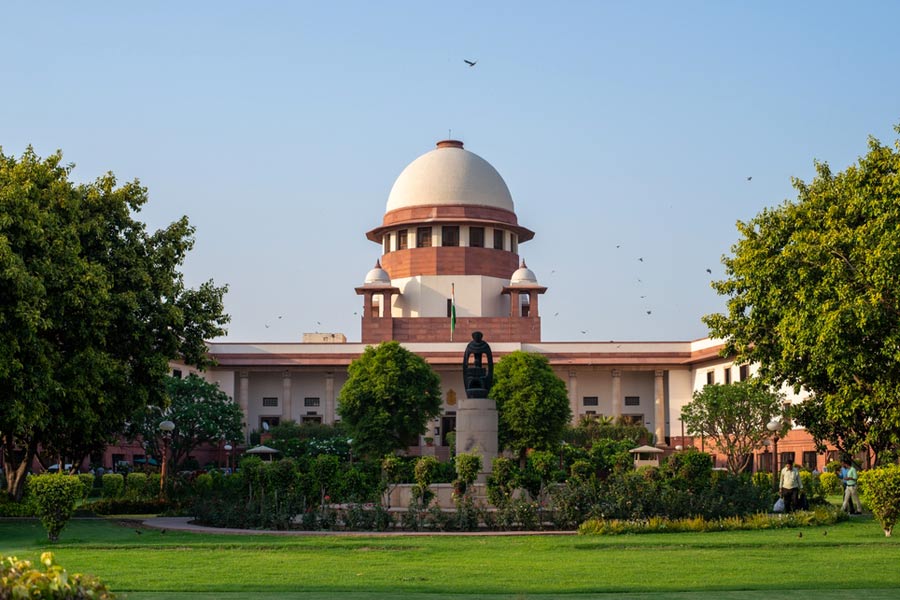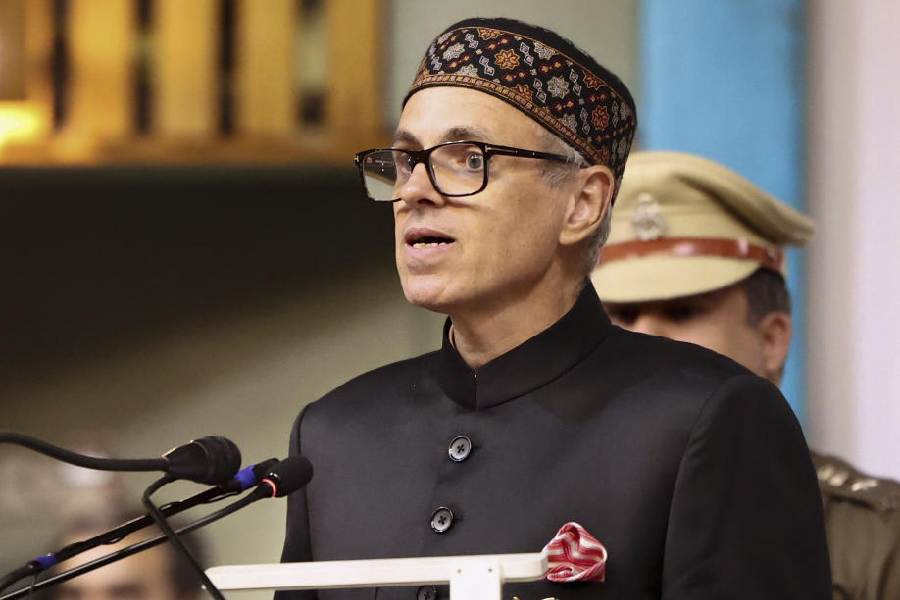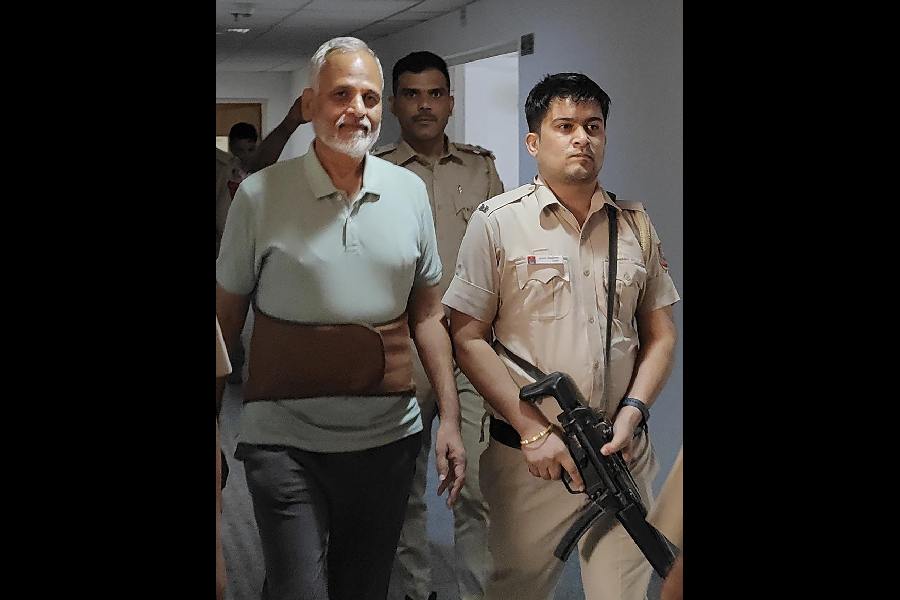The Supreme Court on Friday issued guidelines to the Centre, states and Union Territories on preventing child marriages but did not say whether the Prevention of Child Marriage Act would override the personal laws of various communities that allow the practice.
Solicitor-general Tushar Mehta had on the Centre’s behalf urged the apex court to rule that the Prevention of Child Marriage Act (PCMA), 2006, would prevail over personal laws, citing how various high courts had passed conflicting judgments on the subject.
But the bench of Chief Justice D.Y. Chandrachud, Justice J.B. Pardiwala and Justice Manoj Misra declined, noting that an amendment bill to the 2006 Act, which says the Act would override personal laws, was “pending consideration before Parliament”.
The guidelines mainly direct the Centre, states and Union Territories (UTs) to appoint district-level officials responsible for implementing the PCMA; make it a duty for collectors, SPs and judicial magistrates to act on any tip-off about possible child marriages; and recommend punishment fordefaulting officials.
The National Family Health Survey (2019-21) says that 23.3 per cent of the married women surveyed said they were married before the minimum legal age of 18 (for women). Of the married men surveyed, 17.7 per cent said they were married under the legal age of 21 (for men).
These figures, however, mark a reduction from the 2015-2016 survey data that came up with stats of 26.8 per cent and 20.3 per cent for women and men, respectively.
Friday’s judgment comes at a time when an analysis by the National Commission for the Protection of Child Rights (NCPCR) has suggested that more than 11 lakh children were likely to have been married off in 2023-24.
The 141-page judgment came on a petition from an NGO, the Society for Enlightenment and Voluntary Action (Seva), that claimed the child marriage rate in India remained alarming despite the passage of the PCMA.
Section 28 of the Act defines child marriage as one in which either the bride or groom (or both) is under the legal age of marriage. Those found conducting or abetting child marriages can be jailed for up to three years.
Justice Chandrachud, who authored the judgment, issued the following guidelines:
n State governments and UTs must appoint child marriage prohibition officers (CMPOs) in every district.
n All judicial magistrates must take proactive measures, including the issuance of suo motu injunctions, to prevent child marriages. They must focus on “auspicious days” that are liable to witness mass weddings, when the occurrence of child marriages tends to be high.
◉ On receiving any credible tip-off — or even when there’s only ground for suspicion — magistrates should use their judicial powers to halt child marriages.
◉ Collectors and superintendents of police will be responsible for preventing child marriages in their districts. They must prosecute anyone who facilitates or solemnises a child marriage, including anyone who knowingly assists, promotes or blesses such a marriage.
◉ The Centre must, in coordination with the states, assess the feasibility of establishing fast-track courts that will exclusively handle cases under the PCMA. A status report on the establishment, resource allocation, and potential effectiveness of these fast-track courts must be placed before the apex court within a year.
◉ Disciplinary and legal action must be taken against any public servant who fails to act despite knowing that a child marriage is imminent.
◉ Schools and local institutions must conduct monthly awareness programmes — employing creative methods such as enacting plays, storytelling and interactive sessions — to engage young people on the topic of preventing child marriage, while emphasising gender equality, reproductive rights and personal agency.
◉ All states and UTs must incorporate comprehensive sex education into their school curricula in line with the framework prescribed by the World Health Organisation. This must include clear information on the legal aspects of child marriage, gender equality, reproductive health rights, and the impact of child marriage on the couple’s physical and mental well-being.
◉ The NCPCR should speed up the drafting of a standard operating procedure to establish accountability for officials who fail to report child marriages, to rehabilitate minor survivors, and to initiate prosecution.
◉Police officers, particularly those in the special juvenile police units, must undergo training focused on the legal aspects of the PCMA, child rights, and sensitivity relating to cases involving minors.
◉ The women and child development ministry must conduct mandatory refresher courses for CMPOs every six months.
◉ Emphasis must be placed on preventing mass marriages, often conducted in public, where the participation of government or law enforcement officials can inadvertently lend legitimacy to child marriage ceremonies.
◉ Governments must set up special child marriage prohibition units that will include all the CMPOs of the state or the district, as well as five social workers with experience in working for child rights and against child marriages. At least two of these social workers must be women.
On the Centre’s plea for a direction that the PCMA would prevail over personal laws, the bench observed: “The issue of the interface of personal laws with the prohibition of child marriage under the PCMA has been a subject of some confusion….
“The PCMA states nothing on the validity of the marriage as we have noted above. The Prohibition of Child Marriage (Amending) Bill 2021 was introduced in Parliament on 21 December 2021. The bill was referred for examination to the department-related standing committee on education, women, children, youth and sports.
“The bill sought to amend the PCMA to expressly state the overriding effect of the statute over various personal laws. The issue, therefore, is pending consideration before Parliament.”
The NCPCR report, which said 11 lakh children were likely married off in 2023-24, said Uttar Pradesh led the states with 5.01 lakh children vulnerable to child marriage, followed by Assam and Madhya Pradesh.
It, however, quoted another government report that said an estimated 15 lakh girls under 18 were married off annually. However, police cases were registered in very few instances. For instance, only 1,002 child marriage cases were registered with the police countrywide, it said.
Child rights activist Indira Pancholi said the Right to Education (RTE) Act and the Child Labour (Prohibition and Regulation) Act must be amended if child marriages are to be curbed.
Free and compulsory education must be provided not just to children up to 14 years (and Class VIII) but up to graduation, and quality must be ensured, she said.
As for the Child Labour Act, which allows children aged 14 or above to be engaged in work, the age ceiling must be raised to 18, she added.
“There can be multiple factors behind child marriages. Some people withdraw their children from school thinking that a Class X or XII certificate or even a graduate degree would not help them earn an adequate income as the quality of education is poor,” Pancholi said.
“They engage their children in work and get them married off. If the children get quality and free education up to graduation level, they (families) will encourage children to study and marry later.”
Pancholi said the bill the government had introduced in Parliament to raise the marriageable age for women to 21 might not by itself help reduce child marriage without other proactive measures.
She lauded the Bengal government’s Kanyashree and Rupashree schemes that provide cash incentives to the girl child as they continue their studies and marry only after graduation.
Pancholi added that for pastoral communities, child marriage is a tradition. The government and NGOs should spread awareness among the people about the health issues of child marriage and the increased risk of violence against women who marry underage, she said.









